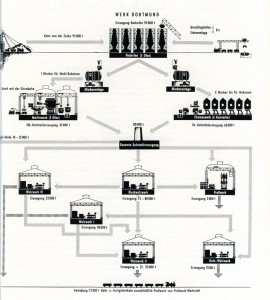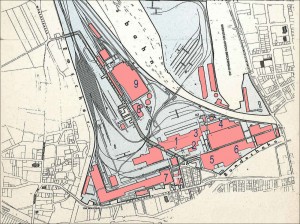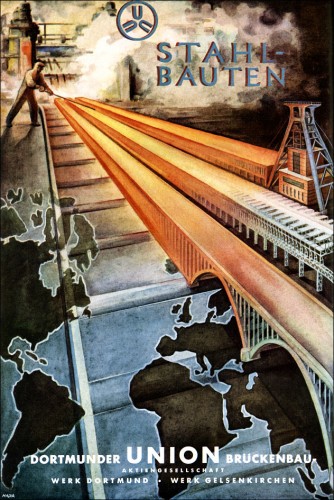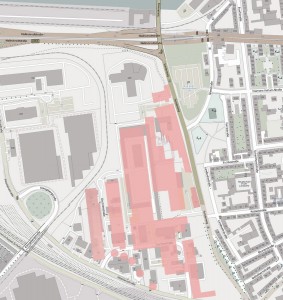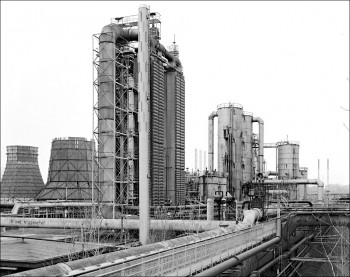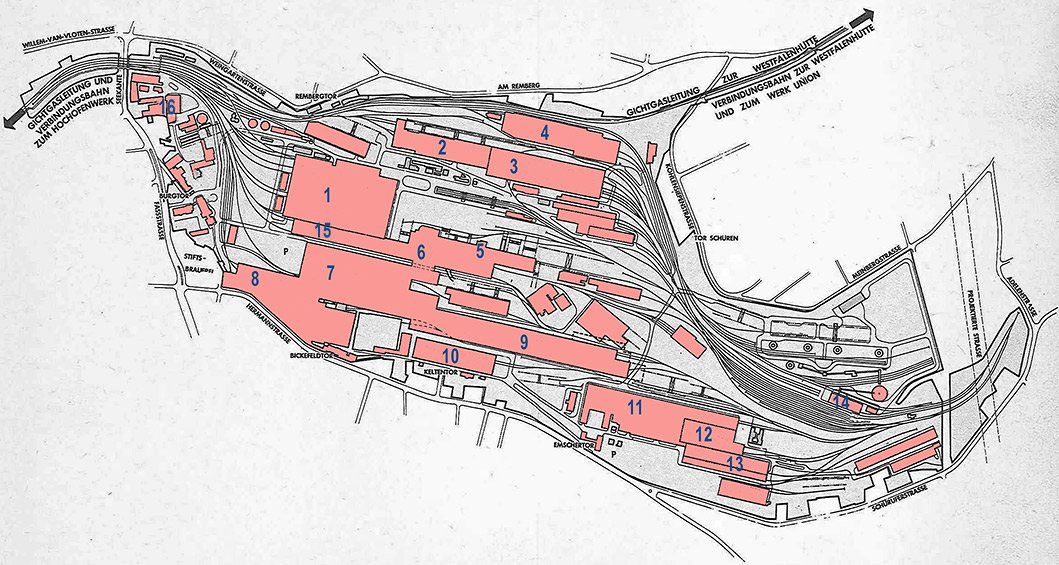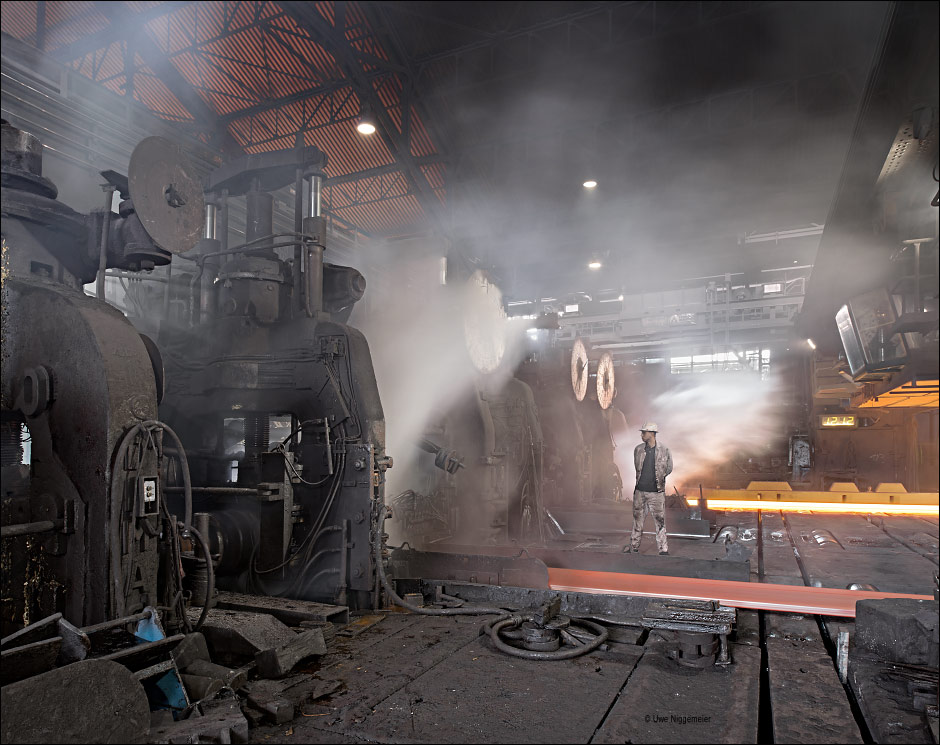
Hoesch Spundwand und Profile (HSP) is the last survivor of the once fully integrated Dortmunder Union steel mill.
The Union AG für Bergbau, Eisen- und Stahl-Industrie was founded in 1872 west of Dortmund in Germany.
In 1881 three blast furnaces were built.
After the Union became part of the Deutsch-Luxemburgische Bergwerks- und Hütten-AG in 1910 an extensive modernisation scheme brought a new Thomas converter melt shop an open hearth shop,a blooming mill and the heavy section mill, called rolling mill NO1, that is partly still in use today.
In 1926 the Union works became part of the Vereinigte Stahlwerke AG from Düsseldorf.
After this company was dismantled after the second world war the Union works joined the Hörder Verein , another steel company from Dortmund, to form the Dortmund Hörder Hüttenunion (DHHU).
In 1957 a continuous medium section rolling mill was erected now called rolling mill NO 2.
In November 1963 the last of the five Union blast furnaces and the Thomas converter steel mill were closed for good.
In 1966 the DHHU was taken over by the Hoesch Stahl AG from Dortmund. The division was called “Werk Union” from now on.
In 1981 the open hearth shop and the rolling mill NO2 were closed.
In 1992 Hoesch was bought by the Krupp company from Essen. Two years later the new subdivision Hoesch Spundwand und Profile was founded.
From 1999 on the remaining rolling mill was part of the ThyssenKrupp Stahl company to be sold to the Salzgitter Stahl company in 2000.
HSP is the only producer of sheet piles and heavy sections in Germany now.
Further images.
1. Heavy sections mill
2. Blooming mill
3. Former Thomas steel mill
4. Open hearth shop
5. Roll lathe plant
6. Forge
7. Medium sections mill
8. Boiler house
9. Repair shops

